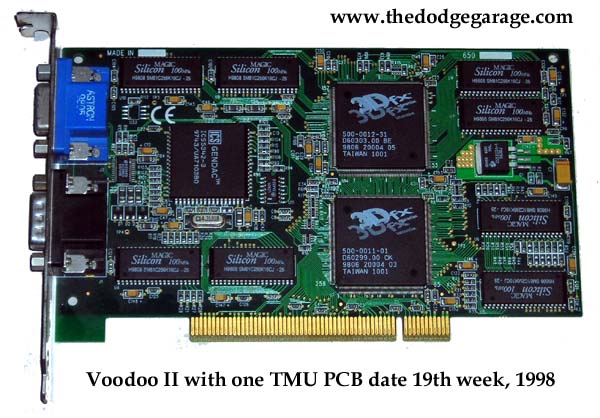
3dfx pre-production & sample Voodoo II
A word about the cards on these pages- To generalize they are boards that were manufactured by 3dfx direct and not yet available to the general public. The boards fall into a number of different categories and I'll try to explain each type as they come up.
Developer kit boards- 3dfx sent developer kits out to the various companies that made video cards, included in the kits of course would have been several sample boards known as "reference" cards. Before 3dfx came along most third party board makers seemed to make their own PCB designs. After the Voodoo Graphics and Voodoo II hit the market and there were so many players involved in selling cards most manufactures could not afford to "be different" and were content to sell cards based off the reference design (a trend that continues to this day.)
Perfect example of boards *most likely* from developer kits below would be the Voodoo II & Banshee with SDRAM. They are clearly pre-production due to date codes and/or internal 3dfx markings and production cards from a number of companies follow their design.
Press "preview" boards? Less certain of being developer kit boards would be the Banshee with SGRAM and the black PCB Voodoo 3 as those PCB design numbers are rarely if ever seen. Build dates, bios revisions or PCB features clearly indicate they are not production cards... this is an area I have to look into further to find out where these cards fit into the scheme of things. It's possible these two cards are samples that were sent out to the press for "preview." The only place I have seen these two PCB designs were in such articles and will show the "press" versions for comparison. Another note about press cards... writers liked to use terms like "Alpha" & "Beta" samples like the cards were software which I do not know if is a correct description or note. I'm going to check with several sites that did previews and see if 3dfx actually used those terms or the writers of the articles did.

A most unusual board- Not only is this singular example a 3dfx Voodoo II with just one TMU but is carries a PCB date of 19th week of 1998! This would be well after the launch of the Voodoo II chipset and a puzzle as to why the board was made in the first place. Perhaps it was a test of a low cost board or for some obscure arcade application? Your guess is as good as mine. Boards with 6mb were floated in the press (see below) but with limited lower resolutions and dropping ram prices deemed economically unviable and not produced for public sale.
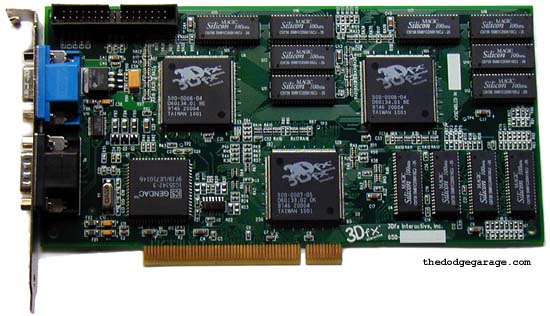
A Voodoo II board dated 44-97! This board is part of lot purchase from a former 3dfx engineer and has several interesting items of note. The most visible of course is the SLI connector pointing outwards instead of upwards and the configuration of the ram for the PFI chip. A closer look however reveals no ram on the back of the board making this a 6MB VII! Such a board was lightly mentioned in the press very early in 1998 but plans were scrapped when Creative Labs went ahead and released 8 and 12 MB boards to the public. Since a 6MB board would have been limited to 640 x 480 no one apparently wanted to miss the 800 x 600 boat and lose sales. Also of interest is the V2 chips have a revision never seen before, TMU 500-0006-04 and PFI 500-0007-05
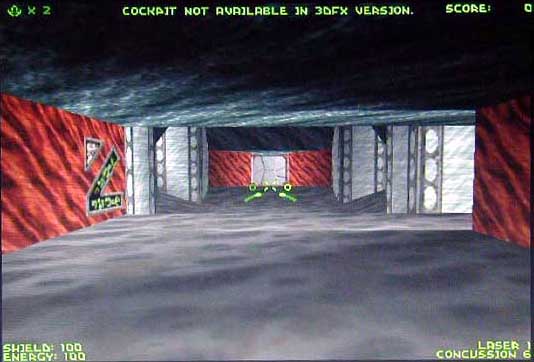
Oddly enough I can't seem to get the board to function in Windows but it works fine in DOS! I was able to play both the early demo versions of Descent and Tomb Raider. The two screenshots shown were taken with a digital camera while the game was running, no screenshot software was utilized.
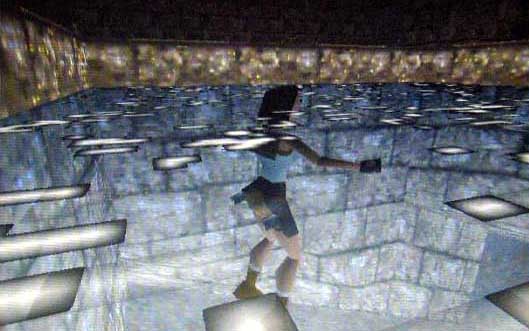
Want to try running Voodoo Graphics or Voodoo II in DOS? Load up DOS 6.22 (That is what I used) and install the demos (I downloaded and transferred via CD-R) once the demo is installed just run the program. No drivers are required as long as you download the correct 3dfx version, the executable will access the card directly.
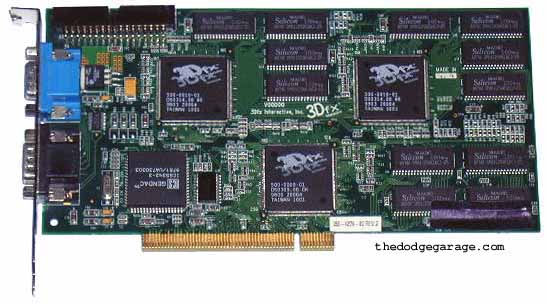
Pre-production or evaluation Voodoo 2 board direct from 3dfx. (CONFIRMED)
Creative Labs was the first to ship V2 cards to market on February 20th 1998 and this board is dated 08-98 (February 16th-20th). Now I'm mindful of the fact of course that cards are made and stockpiled before hand so that there is sufficient numbers on hand for a general release. So the fact that there is a card with a production date before Creative Labs release isn't very odd. However in the case of the initial V2 chip production 3dfx could only supply two vendors with sufficient numbers of chips for production- Creative Labs and Diamond Multimedia, two companies who were fanatical about marking their PCB's with their logos and stamps. This card doesn't have Diamond or Creative Labs logos but sure does have a big 3dfx Interactive Inc. dead center in the middle of the board. Other Asian board makers have used the "3dfx Interactive" logo on their cards but none of them had access to chipsets during this timeframe, just Diamond and Creative. Also there are several IC's on the board that are different from production pieces... that I have only noted on known pre-production or prototype cards.... Even the PCB is a different thickness then any other Voodoo 2 in my collection.
Also odd was that with this 8 meg board was a pair of 12 meg boards that were just 2-3 weeks older and one of them had 110 mhz ram which was unheard of back in early '98! The only production boards I have seen with 110 mhz ram were made well in the last week of December 1999 or later. Also absent from the board is any "CE" or Consumer Electronics markings indicating the product doesn't interfere with other electronic devices and has been tested safe and for consumer sales. Want more?
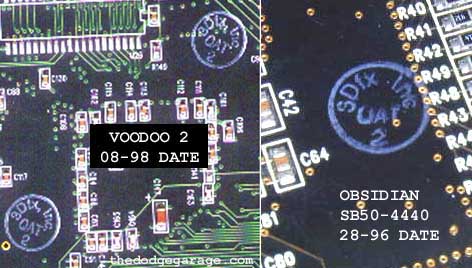
These stamps on the back of the V2 card- "3Dfx Inc." & "QAT 2" are identical to ones found on my new Obsidian SB50-4440 dated 28-96... A card assembled months before the first consumer Voodoo Graphics boards were even available to the public.
A unique piece- A Quantum3D Obsidian2 200SBi but one with just a single Voodoo II chipset. The board is indirectly from a Quantum3D employee who indicated it was an internal sample, a sample for what he never indicated. My thought was it might have been done this way to validate some aspect of the PCB that didn't require two chipsets. One thing I did note is that the board has unusually crisp monitor output! According to the engineer the video output on this board had been routed in such a way to improve video quality and it clearly shows.
Click on the board for a larger image in new window.